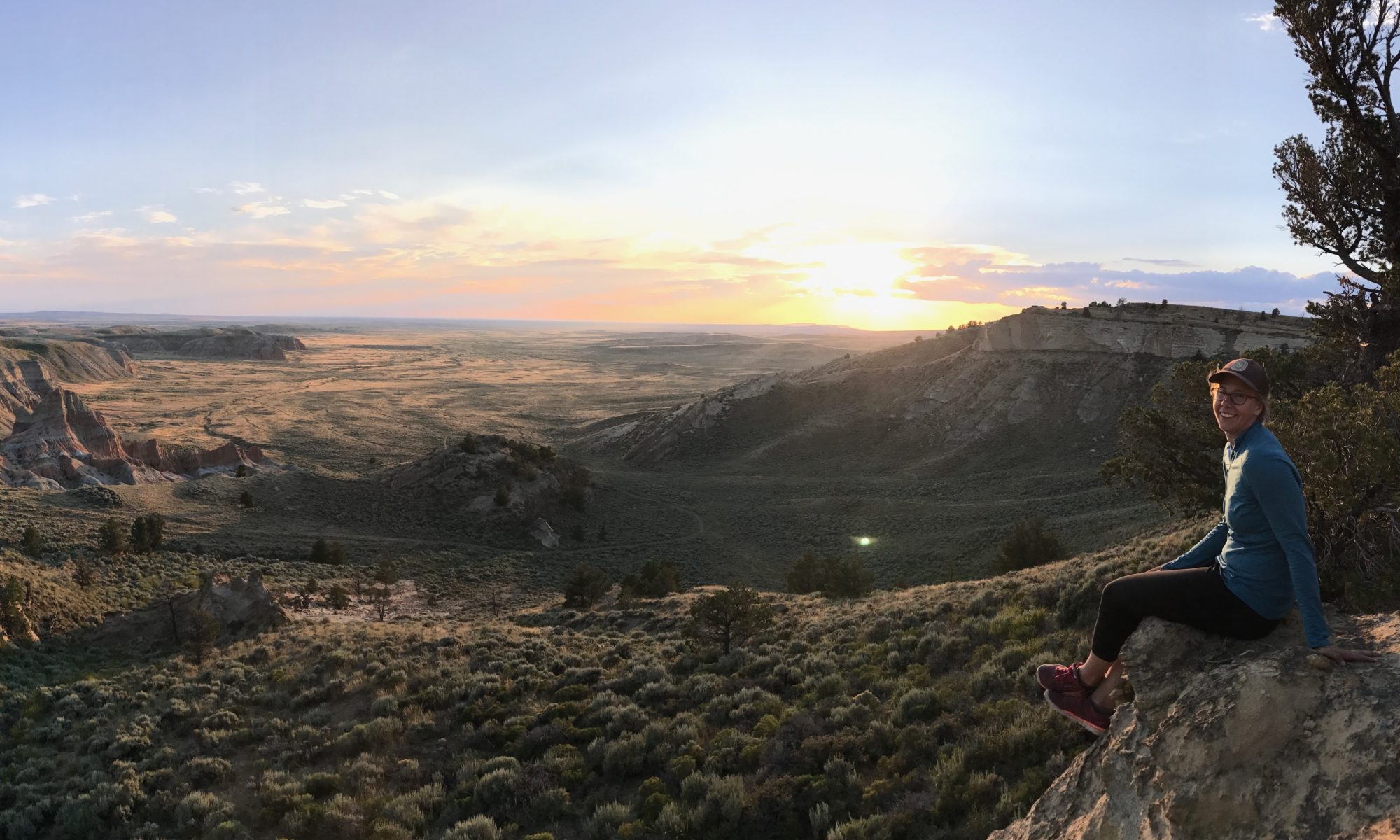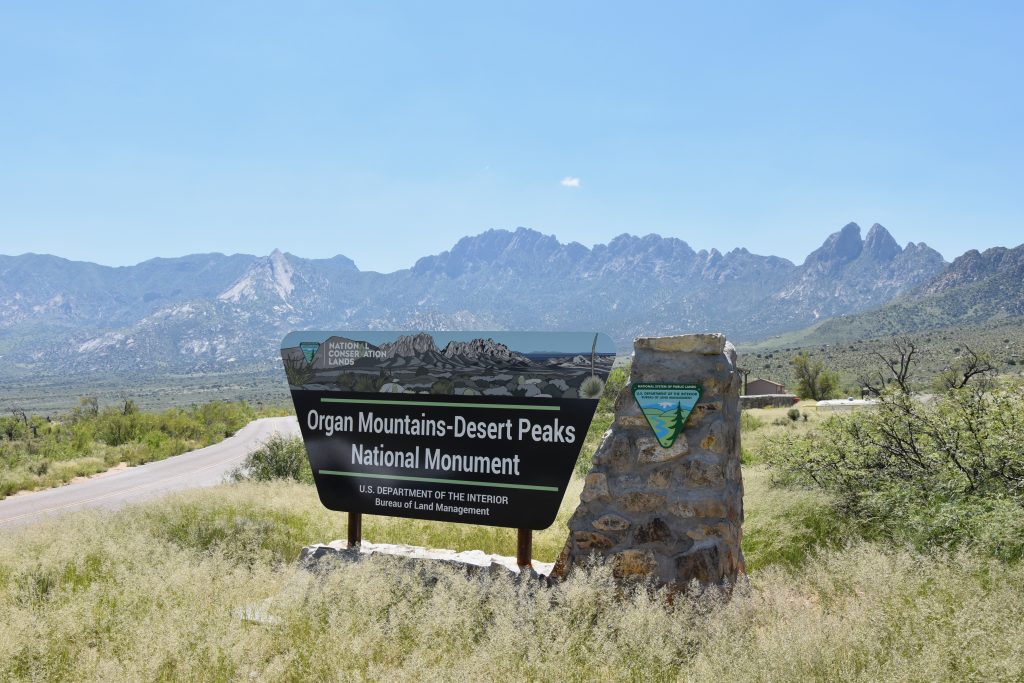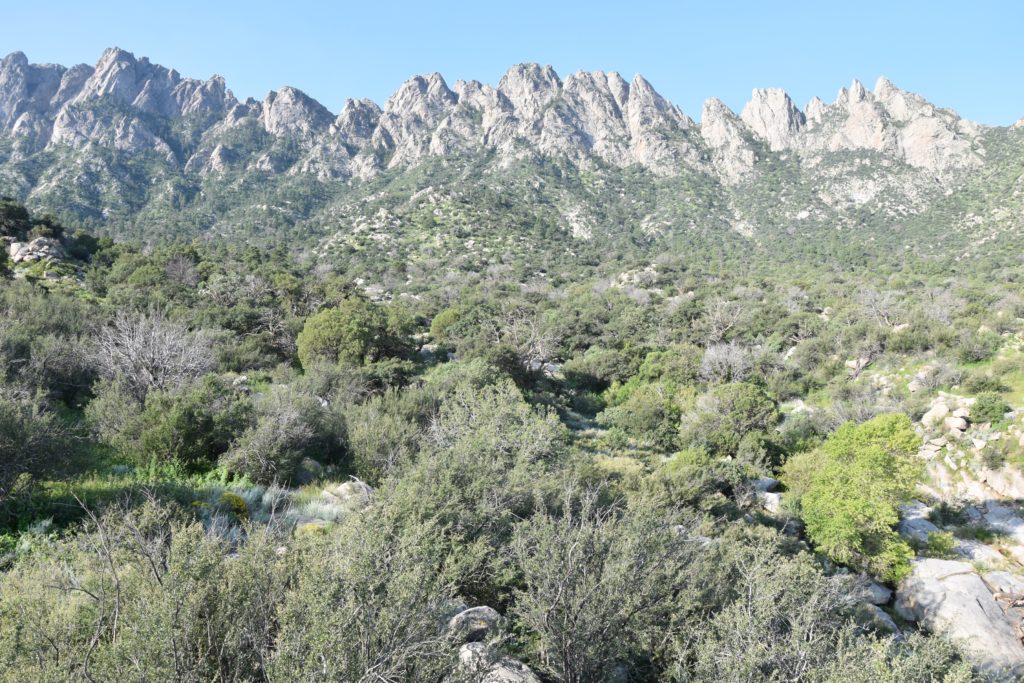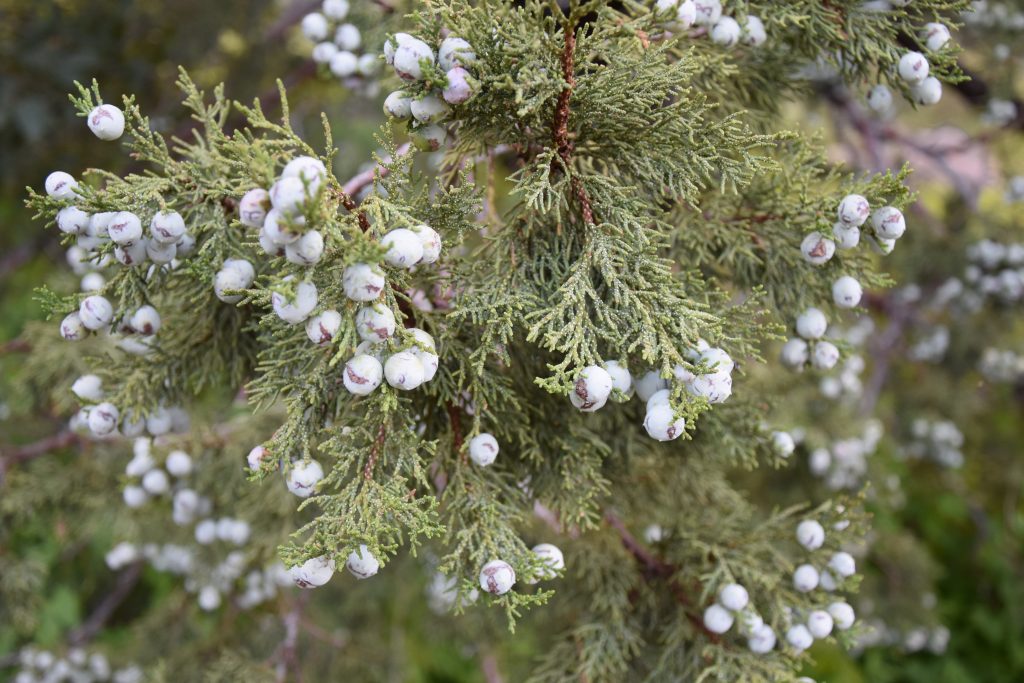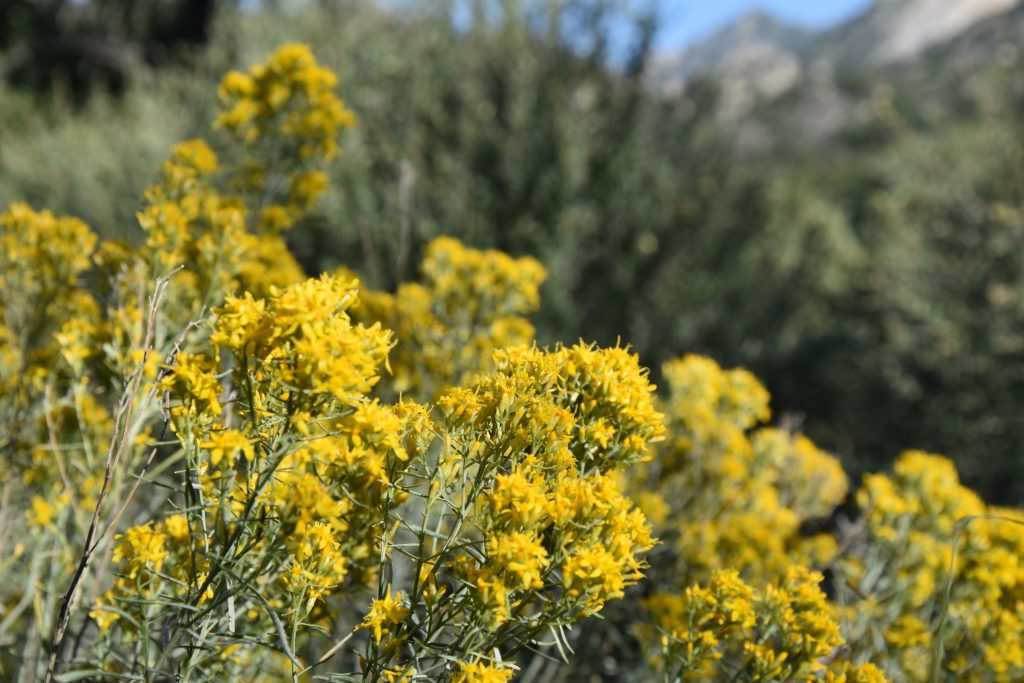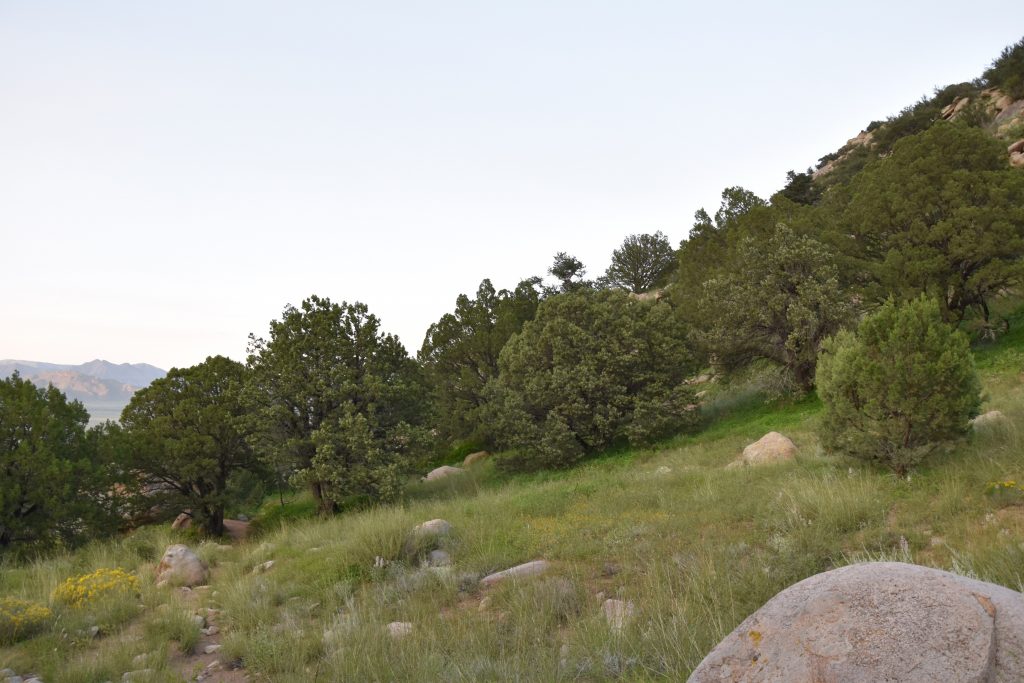
The Organ Mountains Desert Peaks National Monument is comprised of four different areas that surround Las Cruces, NM. There’s the iconic Organ Mountains to the east, the Desert Peaks to the northwest, the Doña Ana Mountains to the north and the Potrillo Mountains to the southwest. Each of the four areas is a little different, preserving different aspects of the what makes OMDP so special: winding canyons, springs, rock cliffs and outcroppings, undisturbed cinder cones, archeological sites, extinct volcanoes, desert grasslands, lava fields and more.
Our first morning in Las Cruces we met Ben Gabriel, Executive Director of Friends of OMDP. Friends has done a great job of showcasing OMPD and highlighting community support for the Monument. After our breakfast and a walk through downtown Las Cruces, it was clear that the city has embraced OMDP and recognized the potential for the Monument to invigorate the local economy. Everywhere we went in Las Cruces there seemed to be another sign announcing their support for OMDP: shirts for sale at the food co-op, window signs at UPS store, even billboards along the highway. It was really great to see a community so engaged with their public lands and invested in protecting them.
Later we drove to the Aguirre Spring Campground on the east side of the Organ Mountains. We were quickly blown away by the diversity and warmth found along that eastern front. Ponderosa pine, oak and juniper woodland, a sea of different grasses and wildflowers, cacti, bugs of wide variety and color, and playful, people-friendly granite boulders strewn throughout. The Organ mountains jutting up from the desert floor provided a spectacular backdrop to all the diversity. That evening we explored the Pine Tree loop which takes you along the base of the southern Organ Mountains. They are dramatic and it is easy to see why this range is so widely photographed.
After Aguirre Spring we drove north along the Robledo Mountains. The Robledo Mountains include canyons, limestone cliffs, grassland and riparian areas along the now often dry Rio Grande river. Along the route we saw the pecan orchards which adjoin the monuments northern portion. Pecan orchards are a dominant economic driver in Las Cruces and have not always been a fan of OMDP. The orchards use flood irrigation which among other after affects is a boon for the mosquito population.
From there we wrapped around the top of the northwestern portion of the Monument and stopped at one entry to the Sierra de Las Uvas Mountains. The terrain is strikingly different than the steep crags and woodland of the Organ Mountains. This northwestern section of the Monument is comprised of grassy tablelands and slow plateauing peaks. We read a suggestion that there is a slot canyon in the area, but we weren’t prepared to find it. New Mexico Meanders has a write up of hiking up Horse Canyon here.
Organ Mountains-Desert Peaks National Monument surprised us in the best way and is one of our favorites of the trip. Better said is this person’s response to the Department of Interior’s review of OMDP:
“After many years steadying myself with prescriptions of heady poetry and quiet meditation, I found a beauty that lasts and a fortitude that carries in the vast expanse of the Organ Mountains-Desert Peaks National Monument. This is what we, the people, want. A national treasure. Retain it as such. Bless future generations with this gift. The world has enough of everything else and not enough wild.”
